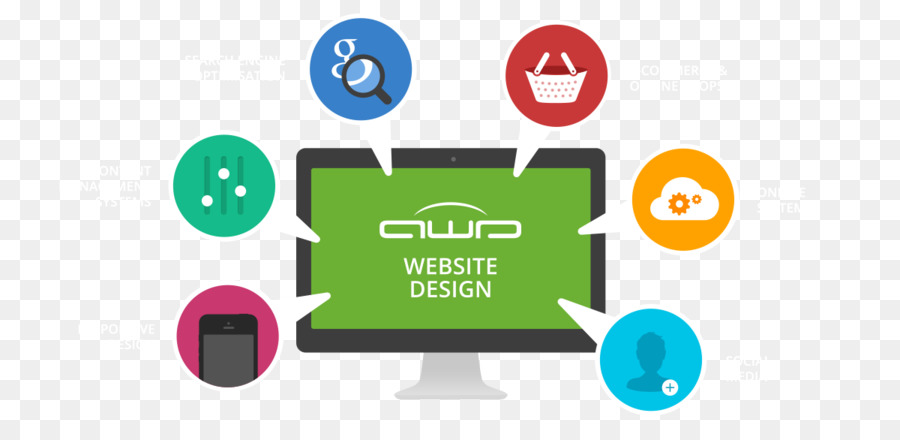The Change Of Online Operatings Systems: A Trip With Time
The Change Of Online Operatings Systems: A Trip With Time
Blog Article
Web Content Create By-Dalrymple Vinson
In the past, web sites were straightforward and concentrated on information. Navigation was straight, and style was for desktops. Now, user experience is crucial. Information overviews styles for simple navigating. Receptive designs fit various tools. Today, dark setting minimizes strain, and minimal food selections enhance navigation. Interactive features engage customers, and strong visuals stand out. AI assimilation improves involvement. See exactly how layout has actually advanced to boost your on-line trip.
Early Days of Web Design
In the very early days of website design, simplicity preponderated. https://www.northbaybusinessjournal.com/article/opinion/4-digital-marketing-strategies-to-ready-your-business-for-the-holidays/ were basic, with restricted shades, fonts, and designs. The focus got on supplying info rather than showy visuals. Users accessed the internet via slow dial-up connections, so speed and performance were vital.
Navigation menus were straightforward, generally situated on top or side of the web page. Internet sites were designed for desktop computers, as mobile browsing wasn't yet prevalent. Material was king, and designers focused on easy readability over complicated style components.
HTML was the main coding language used, and designers had to work within its constraints. Computer animations and interactive features were marginal contrasted to today's requirements. Web sites were static, with little vibrant material or personalized user experiences.
Surge of User-Focused Design
With the evolution of web site layout, a change in the direction of user-focused design principles has actually become increasingly prominent. Today, creating websites that prioritize individual experience is important for involving visitors and achieving organization objectives. User-focused design entails recognizing the requirements, preferences, and habits of your target audience to customize the internet site's design, content, and includes accordingly.
https://online-marketing-squaresp94061.thenerdsblog.com/35482061/by-understanding-the-differences-between-these-two-seo-techniques-companies-can-produce-a-much-more-efficient-online-marketing-strategy-that-drives-both-regional-and-natural-web-traffic-to-their-website conduct extensive research, such as individual studies and usability testing, to collect insights and feedback directly from users. This data-driven strategy assists in producing intuitive navigation, clear calls-to-action, and aesthetically appealing user interfaces that reverberate with site visitors. By positioning the user at the center of the style process, sites can deliver a much more personalized and satisfying experience.
Responsive design has actually additionally emerged as a key facet of user-focused layout, ensuring that websites are enhanced for various gadgets and display sizes. This adaptability enhances availability and use, accommodating the varied methods individuals interact with web sites today. Basically, the increase of user-focused style symbolizes a shift in the direction of creating digital experiences that prioritize the requirements and assumptions of the end individual.
Modern Trends in Website Design
Discover the current patterns shaping web design today. One popular trend is dark mode design, using a sleek and modern appearance while lowering eye pressure in low-light environments. One more vital pattern is minimalist navigation, streamlining menus and enhancing customer experience by focusing on essential elements. Including micro-interactions, such as animated switches or scrolling results, can produce a more interesting and interactive site. Receptive layout remains vital, guaranteeing seamless user experiences throughout different devices. Furthermore, using bold typography and unbalanced layouts can include visual interest and draw attention to specific web content.
Integrating AI innovation, like chatbots for consumer support or customized suggestions, enhances customer involvement and simplifies processes. Ease of access has additionally come to be a substantial pattern, with designers focusing on inclusive style techniques to cater to diverse user demands. Accepting look here by optimizing internet site performance for speed and performance is an additional emerging pattern in website design. Collaborating with customer responses and data analytics to repeat and boost layout constantly is essential for staying pertinent in the ever-evolving electronic landscape. By embracing these modern fads, you can develop a visually attractive, user-friendly internet site that resonates with your audience.
Conclusion
As you reflect on the advancement of site layout from the early days to currently, you can see exactly how user-focused layout has actually become the driving pressure behind modern fads.
Welcome the trip of modification and adjustment in website design, always keeping the customer experience at the forefront.
Stay present with the most recent fads and modern technologies, and never quit advancing your technique to develop aesthetically stunning and easy to use sites.
Develop, adjust, and develop - the future of web design is in your hands.
